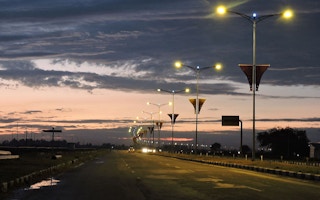India should use its biggest investment in road construction to make its roads safer and build them cheaper with a home-grown technology that salvages plastic waste, analysts said.
India has the world’s second-largest road network and one of the highest numbers of road accidents globally. Official data recorded more than 150,000 deaths from about 500,000 accidents last year.
Nearly a tenth of those deaths were caused by accidents involving potholes, which are a common feature of Indian roads.
“
Plastic roads will not only withstand future monsoon damage but will also solve the problem of disposing of non-recyclable plastic.
Isher Judge Ahluwalia, former head, government committee on urban infrastructure
On Tuesday, the government announced an investment of 6.9 trillion rupees ($11 billion) to build 83,677 km (52,000 miles) of roads over the next five years.
Analysts called for them to be built with a tested technology using plastic waste, which reduces costs and makes roads more durable and thus safer.
“Plastic roads will not only withstand future monsoon damage but will also solve the problem of disposing of non-recyclable plastic,” said Isher Judge Ahluwalia, former head of a government committee on urban infrastructure.
Each kilometre of a single-lane tar road can consume one tonne of plastic waste, and the plastic can double or even triple the life of the road, said the economist in a paper published on Wednesday with Almitra Patel, a solid waste management expert.
India produces about 15,000 tonnes of plastic waste daily, of which about 9,000 tonnes is recycled. The remainder clutters landfills and clogs drains, and is blamed for urban flooding.
A technology developed by Rajagopalan Vasudevan, a chemistry professor at Thiagarajar College of Engineering in the southern city of Madurai, uses finely shredded plastic waste that is added to heated bitumen. This mix is poured over stones.
The plastic waste can include anything from sweet wrappers to shopping bags. The mix cuts the quantity of bitumen required by 10 percent, Vasudevan said.
He developed the technology in 2002 and first built a plastic road in his college before approaching state officials.
“We spend so much on building roads that develop potholes and need rebuilding in no time,” Vasudevan told the Thomson Reuters Foundation.
“The road I built is still intact - there are no potholes, no cracks. That is proof of its strength and durability, plus it uses waste plastic that otherwise litters streets and rivers.”
At least 11 states, including Vasudevan’s home state of Tamil Nadu, have used the technology to build more than 100,000 km of roads, he said.
One student took the technology back to Bhutan.
In 2015, the Indian government made it mandatory to use waste plastic in building most highways. But some states have been slow to embrace the technology, citing difficulties in segregating the plastic and bringing contractors on board.
The new infrastructure commitment gives fresh impetus, Vasudevan said.
This story was published with permission from Thomson Reuters Foundation, the charitable arm of Thomson Reuters, that covers humanitarian news, women’s rights, trafficking, property rights, climate change and resilience. Visit http://news.trust.org)








